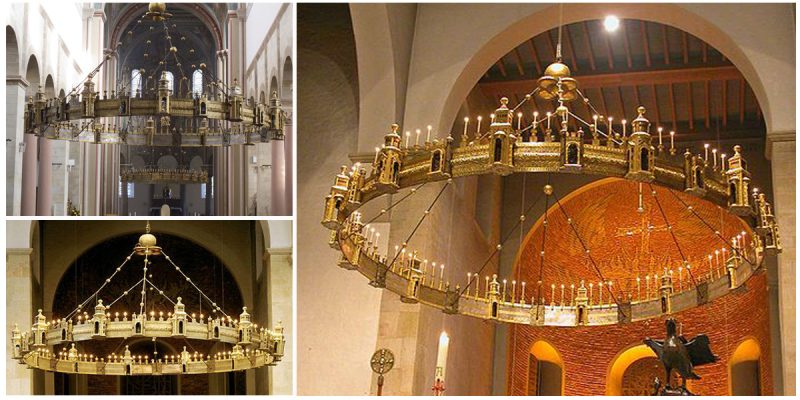The 11th century Romanesque wheel chandelier, Hezilo chandelier, can be seen in the Hildesheim Cathedral in Germany, which since 1985 has been a UNESCO World Cultural Heritage Site.
It is one of the four largest circle-chandeliers (the other examples are the Barbarossa chandelier, the Azelin chandelier, and the Hartwig chandelier) in the country, with a diameter of 19.6 feet. The Bishop Hezilo of Hildesheim commissioned it when he was rebuilding the cathedral after a fire.
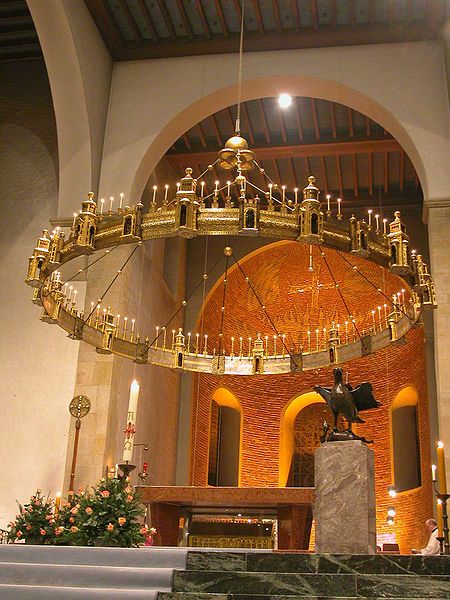
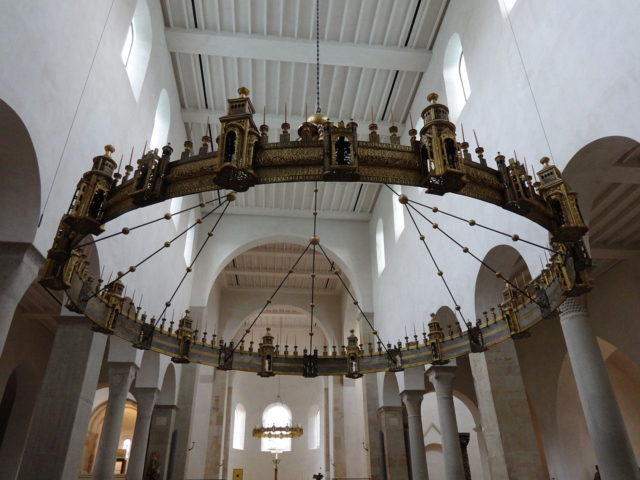
From 2010 to 2014, the entire cathedral was under restoration, so the Hezilo chandelier was temporarily installed in St. Godehard which was the seat of the bishop at that time. After the building was restored, it was reopened in 2014, and the chandelier was returned in its first location in the nave of the cathedral.
Its hoop made of gilt copper has Latin inscriptions from the revelation of St. John on the edges. There are three horizontal bands between the inscriptions which are decorated with foliage. The 72 candles which are placed on the top of the hoop brighten the darkness inside the cathedral.
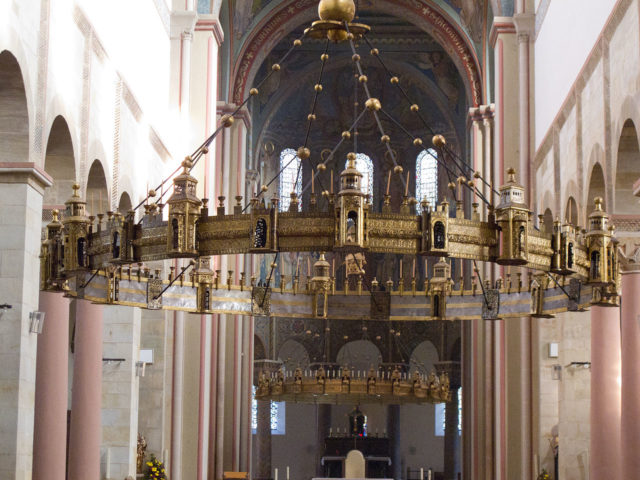
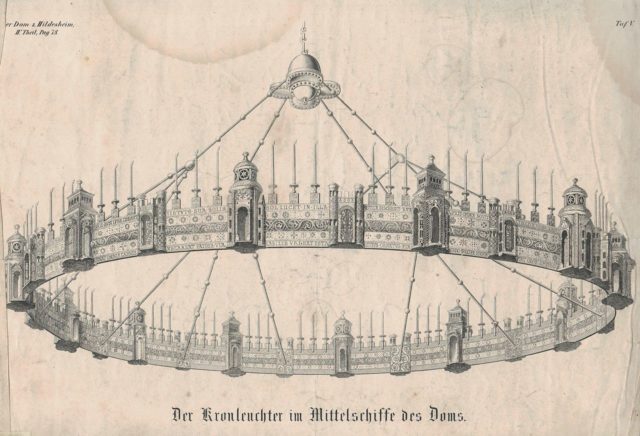
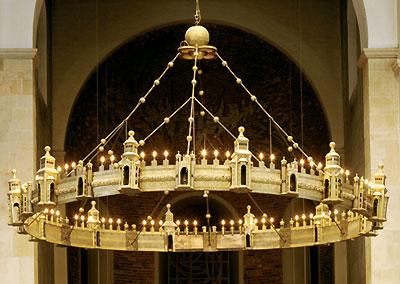
On the front side of the hoop, there are twelve gatehouses and twelve towers. Their layout is a Greek cross which has four apses and a door. Inside the towers, there are statues of lambs, which were probably originally inside. The flat gatehouses are at the same height as the hoop, and each of them has a name of an apostle.
It is believed that, at one time, every doorway of this richly decorated gatehouses had images of the apostles inside. At the center of the chandelier, can be seen a large lamp hanging from a rope. Until the 19th century, this chandelier was at the liturgical center of the cathedral and the services were held under its magnificent light. This sacred piece of art served as a symbol of righteousness.
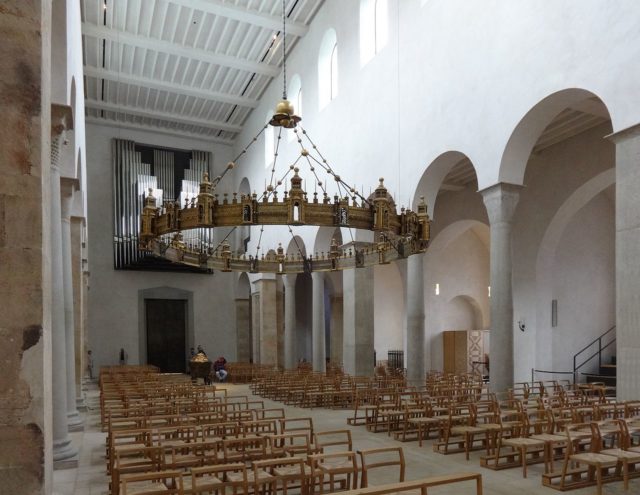
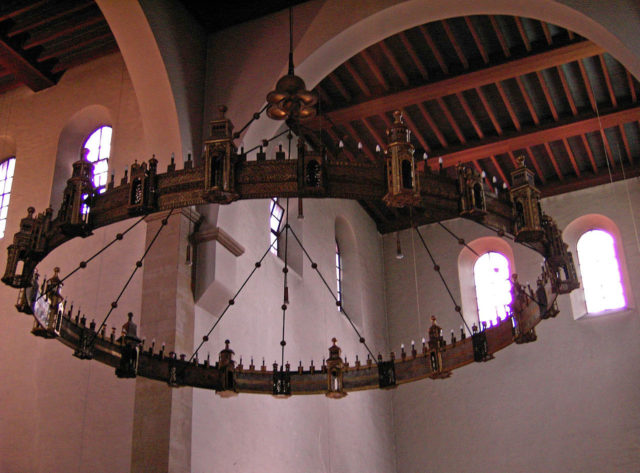
During the WWII, the chandelier was removed from its original place because of the Allied bombing in 1945. When the cathedral was rebuilt ten years later, the almost 1, 000 years old chandelier was placed in the crossing. From 2002 until 2007, it underwent extensive conservation work, and the total cost was around 1,3 million euros.
The design of the chandelier is unique, and the whole edification can’t be entirely concluded because no one knows anything about its previous figures. In its ornamentation, there are elements of Islamic art which support the identification of Jerusalem.
